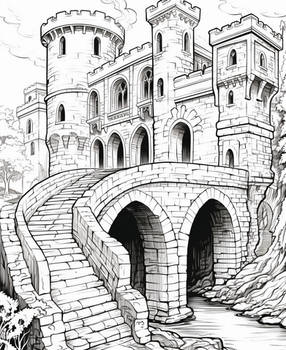Deviation Actions

Description
Portrait of the Demon Lizard Erlik, 2015.
Coloured with Tria Markers and pencils. Additional effects with Adobe Photoshop and acrylics.
Paper size: A4. Made on Letraset’s Bleedproof Marker Pad.Loosely based on: helmeted guineafowl, emu.
References: “Lautenschlager S, Witmer LM, Altangerel P, Rayfield EJ (2013) Edentulism, beaks and biomechanical innovations in the evolution of theropod dinosaurs. PNAS: 1310711110v1-201310711.”, “Lautenschlager, S. Witmer, L. M., Altangerel, P., Zanno, L. E., Rayfield, E. J. (2014): Cranial anatomy of Erlikosaurus andrewsi (Dinosauria, Therizinosauria): new insights based on digital reconstruction. Journal of Vertebrate Paleontology, 34, 6, 1-29. DOI: 10.1080/02724634.2014.874529”
Erlikosaurus andrewsi. For their bizarre appearance that makes them almost look like a patchwork of very different dinosaurs and animals, the terizinosaurs (or segnosaurs) are a true paleontological curiosity. This group is still relatively little-known group but thanks to some key genra like Nothronychus,Beipiaosaurus and Falcarius remarkable discoveries are slowly making their way which have far wider implications. And among the various revelations, one of the most important and at the same time less cited is that about the study ofErlikosaurus skull by Lautenschlager et al.
I find that this animal and the related articles to be crucial in one of the most arbitrary arguments from the dinosaur-related and paleoartistic point of view: the presence or absence of lips in dinosaurs (* in this case I’m using the term to refer to all the fleshy tissue above the teeth, not necessarily homologous to the lips of modern mammals). Erlikosaurus is in a particular position - armed with beak but preserving teeth, with jaws that don’t have the “mammal-like arrangement” of certain ornitischians, the mix of characters it has makes this dinosaur a great starting point and an excellent reference at least for all the species with a primitive bill.
You can find more about certain dinosaur beaks (with exclusive linearts) on the blog post for this drawing: ktboundary-smnt2000.blogspot.i…
The portrait is accompanied by two other variants in black and white (looking shrink-wrapped, but this is due to an error of mine during the colouring process), which are additional alternatives: one with croc-like mouth (which in the blog post is seen to be incorrect or at least farfetched; also it makes the beast incredibly unnatural) and one that includes an extended rhamphotheca with lips, but with a different junction between the two structures, where the lips are attached under the bill instead to be anchored to its protrusions. The main difference with the colored illustration is that the anterior portion of the bill coincides with the skull itself (unlike what can be found in turtles and in many birds: www.chelydra.org/snapper_skull…,shearwater.nl/seabird-osteolog…). I opted for the common variant, believing the other unusual, but that does not mean it is impossible, as evidenced by certain raptors (www.boneroom.com/img/idPics/26…,www.misterhire.com/assets/imag…).
Another thing I wanted to add was something similar to the cere, ie that part of the beak of many birds near the nostrils and that gives the illusion of an even more extended beak. That is for showing you that the bill is not always only formed by the rostral part of the mouth but there are additional extensions (which are more or less keratinous) which may extend along the mouth of the animal as well.
I also wanted to give to Erlikosaurus a neck which was mostly naked but covered with downy-like feathers similar to the ones seen on the emu. Since it was discovered that the primitive therizinosauroid Beipiaosaurus was covered in a dense layer of feathers with quill-like EBFFs (the most primitive stage of feathers), you can often find numerous representations of these dinosaurs as huge porcupine-like birds, with an almost punk look. Just because a species adapted to temperate or moderately cold climates and/or has an apparently tegumentary blanket of pseudo-quills (which don’t break the shape of the animal in the first place and it isn’t known how many EBFFs are indeed genuine and how many of them are more advanced feathers that they still have to develop), this doesn’t mean that all the other animals in the group must follow this trend. So, although I do not exclude such an option, I’m open to portray these coelurosaurs according to other variants.
There is also a further extension of the skin on the throat which is a wattle and nothing more: reptiles and birds have lots of incredible varieties of dewlaps and skin folds and it would be strange to think that many dinosaurs didn’t have them too.
Another little note: the eyes are dark. It may seem like a small thing, but in fact in many reconstructions dinosaurs can be seen with light-coloured eyes, but not all animals have them. Truth be told, many have varieties of brown or reddish eyes so dark that appear almost black. These are merely trifles, but not always unquestioned.
































